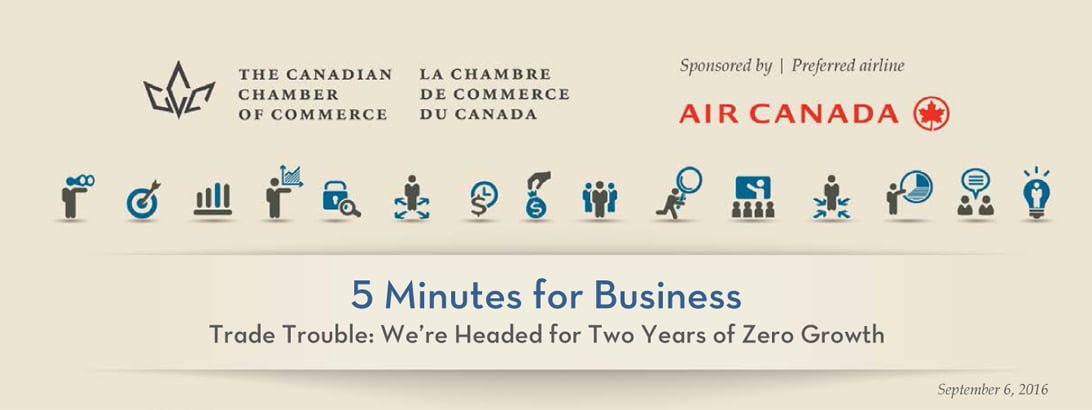It’s not easy being a trade-dependent country in a sluggish global economy with weak commodity prices. Canada’s export numbers are flatter than Saskatchewan—we’re heading for zero growth two years in a row!
And the Canadian economy is being pulled in two different directions by the widening divergence between commodities and manufactured goods. If we compare the first half of 2016 with the same period last year, automotive exports increased by a staggering 23% while oil exports fell by 31%, and pharmaceuticals rose 37% while cereals plummeted by 20%. And so on it goes. Overall, exports are down 2%, and we should be back to zero growth by year-end. Ouch!
Canada has to do better at exporting if it’s going to grow the economy. The top priority is to diversify our trade into more fast-growing markets. The Canadian Chamber welcomes the government’s focus on expanding trade with China. In fact, our CEO Perrin Beatty was in China over the weekend with a delegation of Canadian businesses.
Our members are most excited by the growth in China’s middle class, which now numbers almost 500 million and is rising by over 30 million annually. And they are spending! China’s consumption hit $5.2 trillion last year, and retail sales were up 11%. What about the slow-down in China that we’re all hearing about? A recent report by Boston Consulting Group and Alibaba predicts that even if China’s GDP growth falls to 5.5% per year (well below the current 7%), China’s consumer economy will expand by $2.3 trillion over the next five years. That incremental gain would be bigger than the consumption of Britain or Germany.
Last week, Premier Li Keqiang told reporters that Canada and China will launch a feasibility study to explore a possible free trade deal. Oddly, the Canadians didn’t say a word about it. We understand that a free trade agreement with China would be difficult because of concerns around dumping in the steel sector, labour standards, protection of intellectual property and state-owned enterprises. We should remember the Trans-Pacific Partnership was actually created to address many of these concerns and to create a framework that would one day incorporate China. Let’s work closely with China and build our relationship while ratifying TPP as soon as possible.
The second priority must be to move ahead aggressively on the CETA deal with Europe. The government was wise to appoint a special envoy on CETA, former Cabinet minister Pierre Pettigrew because the blockage is mainly political—European anti-trade sentiment and worries that our deal would be a model for free trade with the USA. There may be a new opening now that the U.S.-Europe negotiations are essentially dead.
Thirdly, we recognize that trade agreements are not everything, and Canada must also bolster trade promotion services and diplomatic support for companies abroad. Our small businesses often need help attending trade shows, developing local contacts and adapting to foreign regulations.
Finally, we have to invest now in trade-enabling infrastructure because the rail and ports, those vital export corridors, will be sorely needed when the global economy gets back on track.
All this will make our export performance healthier and more beautiful (like Saskatchewan).
For more information, please contact:
Hendrik Brakel
Senior Director, Economic, Financial & Tax Policy
613.238.4000 (284) | hbrakel@chamber.ca



